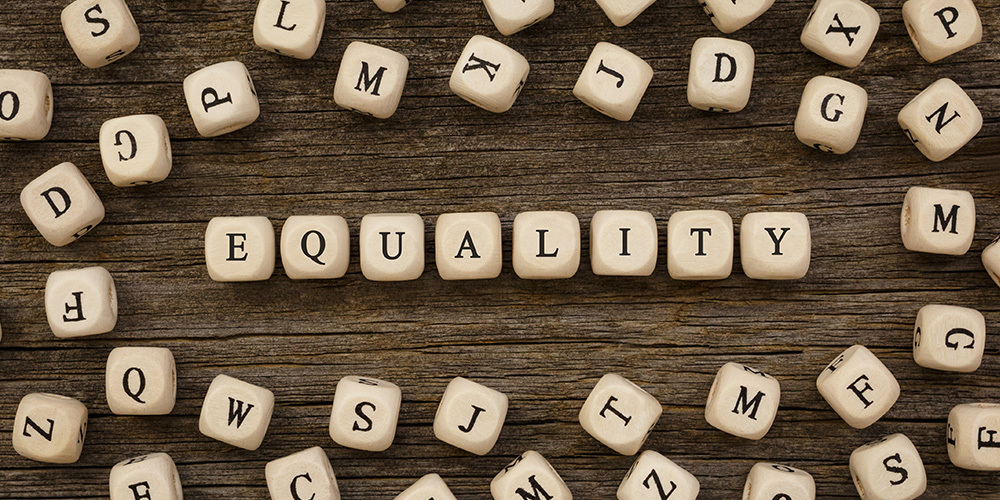It was April 5, 1968, the day after Martin Luther King Jr.’s assassination. The nation was reeling as news spread of the civil rights leader’s death, and many couldn’t help but wonder what this loss would mean for the future of race relations and civil rights in the United States.
Meanwhile, in a rural, nearly all-white town in Iowa, elementary school teacher Jane Elliott made a decision. She’d talked to her students about discrimination, but now she knew it was time to make it real for them. Thus began the famous blue-eyes, brown-eyes experiment.
Although the term social–emotional learning didn’t exist in the 1960s, Jane Elliott’s experiment is a rich example of how to help students understand the experiences and feelings of others. In this article, we’ll explore the details and history of the experiment and then discuss how you can bring some of the same principles to your classroom.
The Blue-Eyes, Brown-Eyes Experiment
Elliott began the exercise by dividing her students by eye color. She gave the blue-eyed students an armband so other students could more easily identify them, and then she told her class that it was a scientific fact that people with brown eyes are smarter than those with blue because their bodies had more melanin.
She drummed this concept into her students at every opportunity: If a blue-eyed student got an answer wrong, it was because of his or her eye color; if a blue-eyed student dropped a pencil, it was because blue-eyed people were careless and lazy with their possessions. She gave brown-eyed students extra privileges such as more recess time, and told blue-eyed students they’d have to use cups rather than drinking directly out of the water fountain in case they spread one of their diseases.
The students quickly caught on. Soon, they were calling each other “brownies” and “blueys” and explaining away one another’s behaviors based on eye color. Normally shy or withdrawn brown-eyed students became confident, even bullying, and normally bright blue-eyed students began underperforming on assignments.
The next day, Elliott flipped the tables: Blue-eyed students were smarter and had more privileges, and brown-eyed students were told they were lazy and dumb. Just like the day before, the blue-eyed students quickly became cruel and superior toward their peers until Elliott called an end to the experiment. Many of the students cried and embraced when their teacher lifted the artificial barriers between them.
The Eye of the Storm
Elliott continued to do the experiment with her students every year. Word got around, and the exercise became the subject of national attention when ABC made a documentary about it, The Eye of the Storm. Although some were amazed by the effect the experiment had on students, others were deeply critical, saying Elliott’s methods would psychologically damage students. Elliott and her entire family received backlash from her hometown, but Elliott persisted in doing the exercise until she left teaching to continue her work with adults. She now gives lectures and hosts workplace diversity trainings for GE, Exxon, AT&T, IBM, and federal agencies including the FBI, IRS, U.S. Navy, U.S. Department of Education, and U.S. Postal Service.
Twenty years after the first experiment, PBS brought together Elliott and the students who appeared in The Eye of the Storm. Check out this follow-up film, A Class Divided, to see footage from the original documentary and hear the students’ thoughts on the experiment years later:
Bringing Jane Elliott’s Lessons to Your Classroom
If you watch even a few minutes of the blue-eyes, brown-eyes experiment, you’ll know that Elliott’s methods were forceful, to say the least. Her techniques, though revolutionary, probably won’t work well in a modern classroom. Rather than unleashing the blue-eyes, brown-eyes experiment on your students, here are some alternative ideas for teaching your students about discrimination:
- Screen The Eye of the Storm or A Class Divided. Afterward, have a class discussion on the techniques Elliott used and how your students might feel if they had been in her class. At the time of this writing, The Eye of the Storm is only available for purchase on Jane Elliott’s website. However, as mentioned above, A Class Divided is available for free from PBS.
- Read one of the following books about racial inequalities:
- Let It Shine by Andrea Davis Pinkney: Biographical stories about black women who fought against injustice, including Rosa Parks, Sojourner Truth, Harriet Tubman, and many more.
- The Day You Begin by Jacqueline Woodson: An illustrated book that teaches young children how to handle feeling different from their peers.
- My Hair Is a Garden by Cozbi A. Cabrera: An illustrated book in which a young girl learns that her hair, though different from her peers’, is beautiful.
- The Whispering Town by Jennifer Elvgren: An illustrated book based on a true story about a Danish family hiding a Jewish woman and her son during World War II.
- Identify harmful vocabulary terms and talk about how you can replace them with positive ones. When you help students break free of a fixed mindset about themselves and others, they will be less likely to judge and condemn people (including themselves!).
More on Social–Emotional Learning
Although Americans have fought against racism for decades, we know it still exists both here and around the world. Jane Elliott’s experiment did an excellent job of demonstrating the unfairness and even absurdity of making assumptions about someone’s character based on immutable traits. Although her methods were severe, it’s important to teach the same lessons to students today and, just as importantly, to spur students to take action against injustice in their world.






